How to Use Waverly Antique Wax
Are you looking for a way to give your furniture and DIY projects a grungy antique look? In this blog post, we will walk through step-by-step instructions on how to use Waverly Antique Wax in order to create a worn look when chalk painting furniture.
From what to do before applying the wax, to how to apply the wax – everything you need to know about using Waverly Antique Wax can be found here!
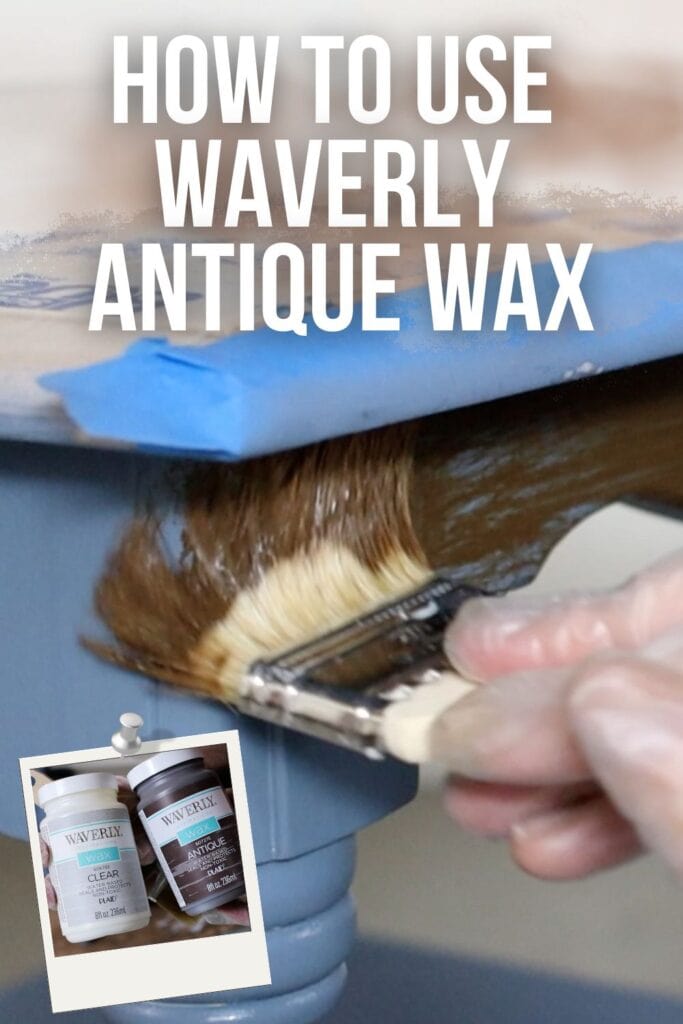
Giving your painted furniture an antique look is easy and budget friendly with Waverly Antique Wax. This popular product is a great way to add extra detail and texture to any project, giving it an aged, vintage feel.
With just a few simple steps you can transform your project into something truly special!
Be careful to follow these steps exactly for your project to turn out right in the end. If you skip around, there is a very high chance you will not be satisfied with it in the end.
Supplies for Using Waverly Antique Wax
As an Amazon Associate, I earn from qualifying purchases. I also may earn from other qualifying purchases with other companies or get free product to review and use. All opinions are my own.
How to Use Waverly Antique Wax
When using Waverly Antique Wax, it is very important to prepare the surface before applying the wax. If the paint is still wet or has not fully cured for at least 24 hours, then waxing will not be effective and can potentially damage the piece.
So, after you have chalk painted your furniture or decor, wait at least 24 hours for the chalk paint to dry. This will ensure that the paint is hard enough to withstand the rubbing that you will do when applying the wax.
Here’s our blog post about how to use Waverly Chalk Paint and Wax to learn more about how to use these two products together.
If the paint hasn’t started to cure, or if no prep was done before painting the furniture with chalk paint, then the paint will most likely rub off while you are rubbing off the wax, since the wax gets the paint wet again and kind of activates it again.
If you aren’t sure what things you should do before chalk painting furniture, here is our how to prep furniture for paint guide that walks you through the simple steps. Doing these things will help the paint not rub off when applying the wax.
Then, just make sure that your chalk paint is free of dust and grime before moving onto the next step.
Applying Clear Wax
Once the surface is prepped and ready to go, it’s time to apply clear wax. Use a chip brush or wax brush for this step.
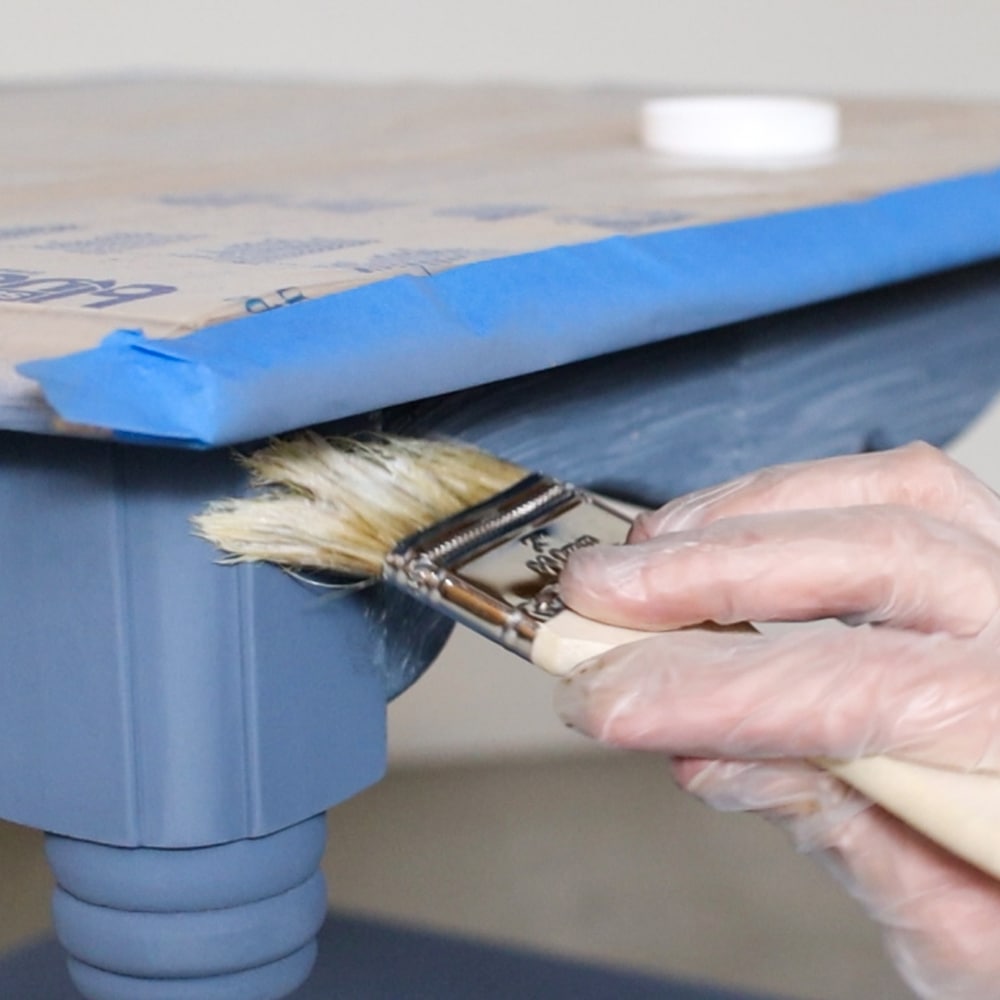
Dip the brush into the wax and then spread a thin coat of wax over a manageable section of your project (ex: side of the dresser, a drawer, the top of the table, etc.) This wax has a thin consistency unlike other waxes, so it is easy to brush onto the surface.
Make sure you get the wax all over, including in all of the crevices and details.
Once you have applied a thin coat of clear wax, use a lint-free rag to wipe off any excess wax from the surface. We want a very thin layer of the clear wax to be left behind.
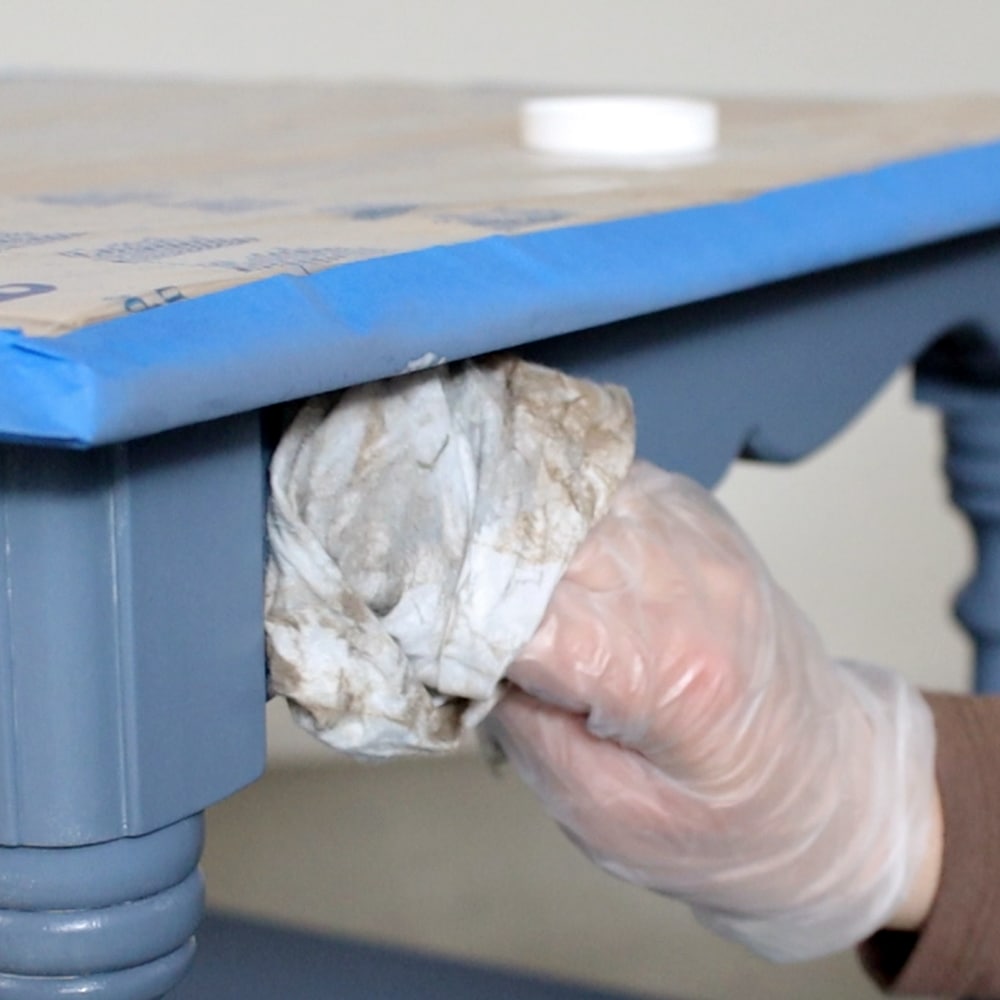
Check out our blog post about how to apply Waverly Wax over chalk paint where we used Waverly clear wax for more information.
Why do we need to apply some clear wax before using the antique wax?
If you apply the antique wax directly to chalk paint, it will soak right in, and you will basically stain the whole thing and end up with brown blobs that aren’t easy to manipulate or remove.
The clear wax acts as a barrier to prevent the dark wax from soaking in too fast so you can remove what antique wax you don’t want, and leave it in the places you do want it.
Applying Antique Wax
Once there is a very thin coat of clear wax on your paint, use another wax brush or chip brush to apply the Waverly antique wax in small sections.
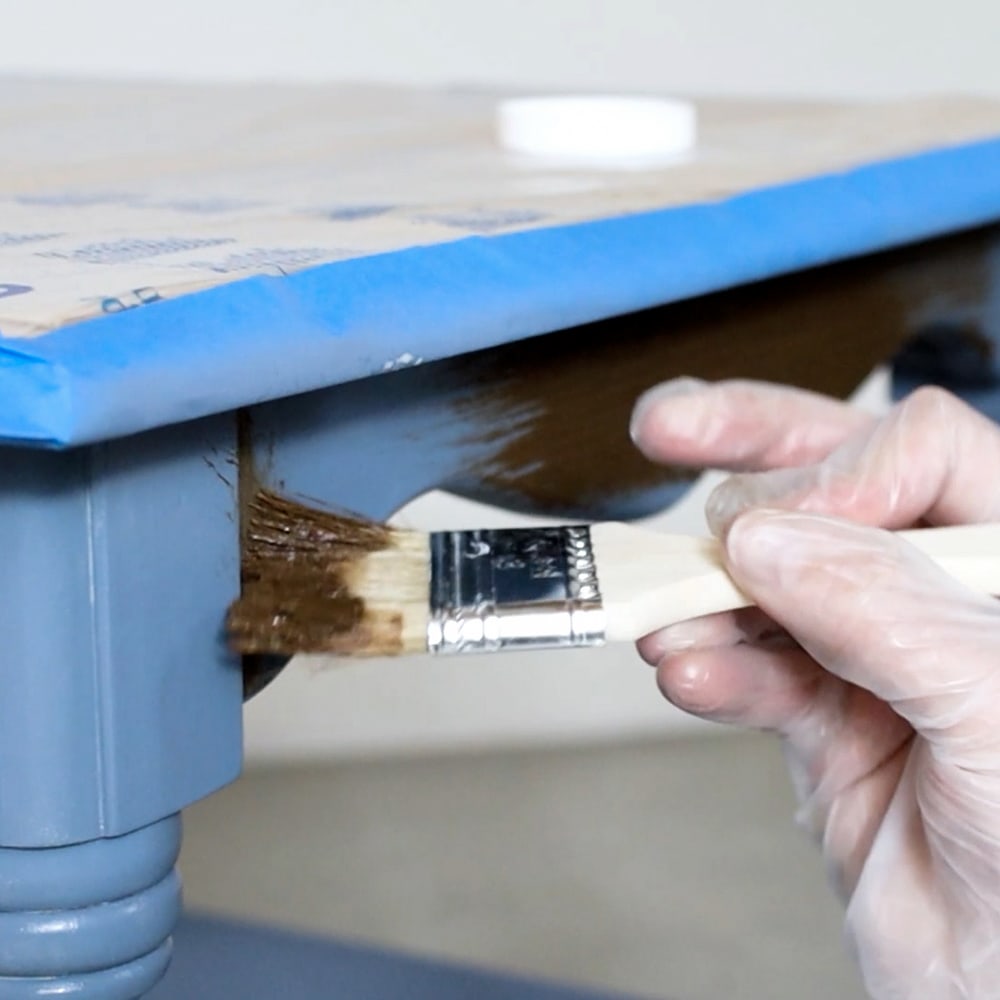
I like to brush it into crevices, corners, and any details first, then I lightly brush the small amount that remains on my brush in the center of the area I’m working in. That way I will have more in the details of the piece and less brown wax all over the rest of the paint.
I personally like the look on antique wax staying mostly in the corners and crevices like dirt build up would over the years. And then the middle areas have just a light coat of it.
Then use the lint free rag to remove the excess wax. At this point, you can spread the wax around more and you can even use some more clear wax to remove the antique wax if there is too much.
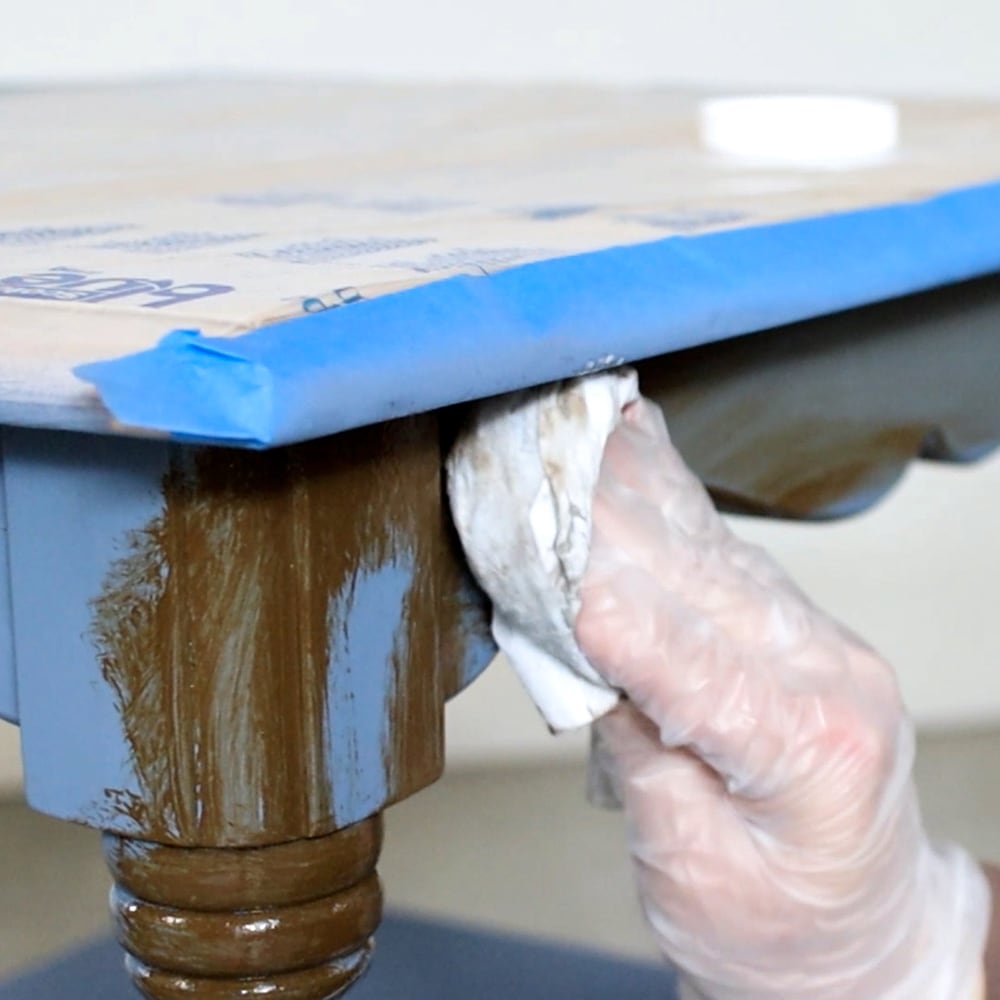
Use this time to manipulate the antique wax to look the way that you want it.
Completing the Process
Once you have finished applying the wax to all of your chalk painted areas, it is time to let the project dry. Depending on the climate where you are working it can take anywhere from 2-4 days for the wax to completely dry and not feel tacky.
Then it will take about a month for the wax to cure. If you left behind thick layers of wax, the wax will take even longer to dry and cure.
Once dry, you’ll be left with a beautiful matte finish. Over time, reapply the wax if it looks like it is wearing off.
And there you have it! Another option is to use glaze instead of wax over chalk paint. Glaze will dry and cure faster than wax will. If you want to see if glazing over chalk paint is right for you, here is our glaze vs wax post.
And one more bit of advice, wax isn’t the only type of topcoat you can use over chalk paint. I personally like to use waterbased polyurethane because it dries quicker and is more durable.
Check out our wax vs polyurethane post to learn if wax is the right option for you, or if you might want to use polyurethane instead.
Happy Painting!
more Chalk painting tips
- 5 Chalk Paint Problems and How to Fix Them
- Wax For Chalk Paint: Is It The Right Choice For Your Furniture?
- The Truth About Using Chalk Paint for Furniture
- Chalk Painted End Tables
Follow us on YouTube to get more tips for painting furniture.
Or share your project with us on our Facebook Group and be part of our community. See you there!

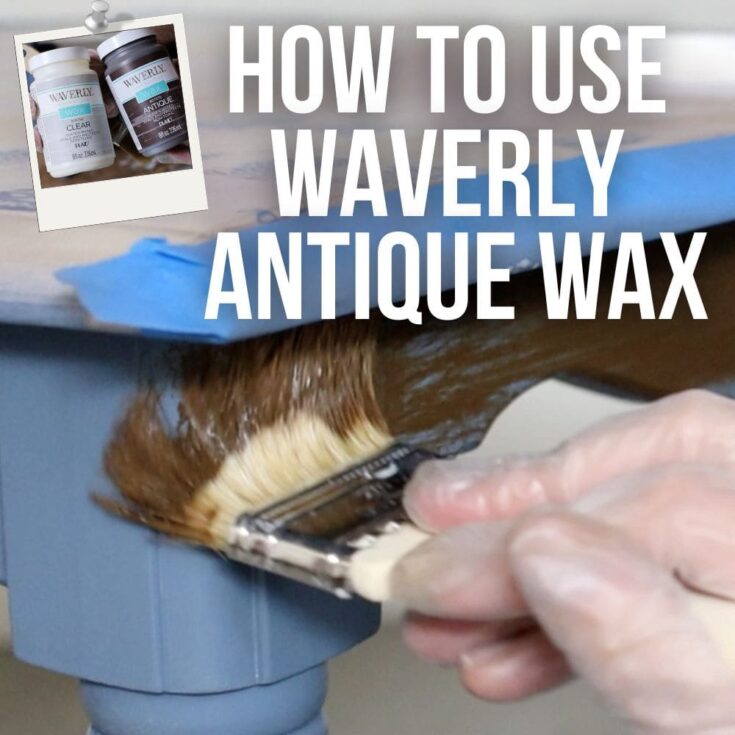



If using glaze on chalk paint can you still spray on a satin water based poly on top to seal it?
yep you can. I would recommend it actually.